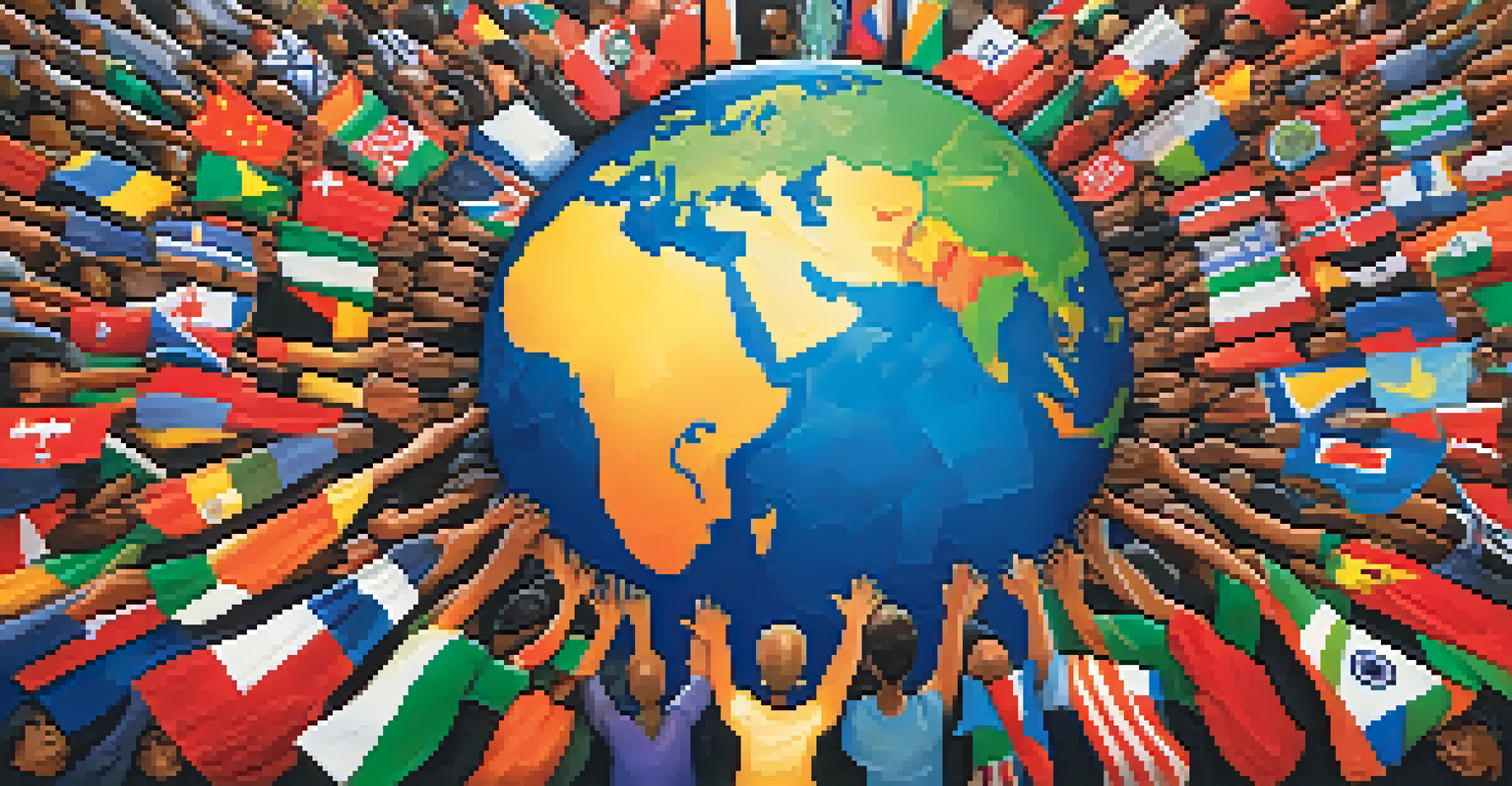The Role of Cultural Competence in Conflict Resolution

What is Cultural Competence in Conflict Resolution?
Cultural competence refers to the ability to understand, communicate with, and effectively interact with people across cultures. In the context of conflict resolution, it’s about recognizing and respecting diverse perspectives and values. This skill becomes crucial when dealing with disagreements that stem from cultural differences, as it helps to bridge gaps and foster understanding.
The greatest problem in communication is the illusion that it has been accomplished.
For instance, imagine two teams from different cultural backgrounds facing a disagreement over project direction. A culturally competent facilitator would approach the situation by acknowledging these differences and guiding both teams toward a mutual understanding. This not only resolves the conflict but also strengthens relationships between the teams.
Ultimately, cultural competence is not just beneficial; it’s essential for effective conflict resolution in our increasingly globalized world. By understanding the cultural contexts of all parties involved, we pave the way for more meaningful and constructive conversations.
The Importance of Active Listening
Active listening is a cornerstone of cultural competence and conflict resolution. It involves not just hearing the words spoken but truly understanding the underlying emotions and cultural nuances. This practice encourages individuals to focus on the speaker without distractions, fostering a deeper connection.

For example, during a heated discussion, one participant may express frustration based on cultural expectations that are not immediately apparent. By actively listening, others can pick up on these cues and respond in a way that acknowledges and respects those feelings. This can prevent misunderstandings and help de-escalate tensions.
Cultural Competence Enhances Resolution
Understanding diverse cultural perspectives is crucial for effective conflict resolution.
Incorporating active listening into conflict resolution processes ensures that all voices are heard and valued. This approach not only resolves the immediate conflict but also builds trust among participants, creating a more harmonious environment for future interactions.
Identifying Cultural Differences
One of the first steps in resolving conflicts is identifying the cultural differences at play. Different cultures may have unique communication styles, conflict resolution approaches, and values, which can lead to misunderstandings. Recognizing these differences can significantly impact the resolution process.
Empathy is about finding echoes of another person in yourself.
For instance, in some cultures, direct confrontation is seen as a sign of honesty, while in others, it may be viewed as disrespectful. By understanding these contrasting viewpoints, mediators can tailor their strategies to suit the participants’ cultural backgrounds, thereby creating a more effective resolution process.
This identification process encourages individuals to reflect on their own cultural biases and assumptions. By doing so, they can approach conflicts with greater empathy and insight, leading to more constructive outcomes.
Building Empathy Across Cultures
Empathy is essential in bridging cultural gaps during conflict resolution. By putting ourselves in someone else’s shoes, we can better understand their motivations, fears, and perspectives. This understanding can transform a conflict from a combative situation to a collaborative one.
For example, if a colleague from a collectivist culture feels sidelined in group discussions, recognizing their need for inclusion can lead to more inclusive practices. By fostering empathy, teams can create an environment where everyone feels valued and heard, reducing the likelihood of future conflicts.
Active Listening Builds Trust
Active listening allows participants to grasp underlying emotions, facilitating better communication.
Moreover, building empathy is not a one-time effort; it requires continuous practice and openness to learning. As individuals engage with diverse cultures, they develop a richer understanding of human experiences, which ultimately enhances their conflict resolution skills.
The Role of Nonverbal Communication
Nonverbal communication plays a critical role in conveying messages, especially in cross-cultural contexts. Gestures, facial expressions, and body language can differ significantly from one culture to another, leading to potential misinterpretations during conflicts. Understanding these nonverbal cues can enhance clarity and reduce misunderstandings.
For instance, maintaining eye contact may be seen as a sign of confidence in some cultures, while in others, it might be perceived as confrontational. Being aware of these differences allows individuals to adjust their communication styles, fostering a more respectful and effective dialogue.
Incorporating an awareness of nonverbal communication into conflict resolution practices can greatly enhance outcomes. By being mindful of how they present themselves, individuals can create a more inviting atmosphere that encourages open communication and resolution.
Strategies for Culturally Competent Conflict Resolution
Implementing culturally competent strategies involves a series of practical steps that can lead to more effective conflict resolutions. These strategies include conducting cultural assessments, encouraging open dialogue, and promoting inclusivity within discussions. By systematically addressing cultural dynamics, organizations can significantly improve their conflict resolution outcomes.
For example, training sessions that focus on cultural awareness can equip team members with the tools needed to navigate conflicts effectively. These sessions could involve role-playing scenarios to practice responses in culturally sensitive ways, enhancing their ability to handle real-world situations.
Empathy Bridges Cultural Gaps
Building empathy across cultures transforms conflicts into collaborative solutions.
Moreover, ongoing education about cultural competence can foster an environment of continuous learning. As team members become more aware of cultural differences, they are better prepared to engage in respectful and productive conflict resolution.
The Long-term Benefits of Cultural Competence
Investing in cultural competence yields long-term benefits that extend beyond conflict resolution itself. Organizations that prioritize cultural understanding create a more inclusive workplace, which can enhance employee morale and productivity. This positive environment encourages collaboration and innovation, as individuals feel valued and respected.
Furthermore, culturally competent conflict resolution practices can lead to stronger relationships both internally and externally. Clients and partners are more likely to engage with organizations that demonstrate a commitment to understanding diverse perspectives, ultimately leading to greater loyalty and business success.

In the long run, fostering cultural competence transforms how organizations operate. By embedding these principles in the organizational culture, they pave the way for a more harmonious and productive future.